I'm very new to electronics and I built this guitar amp circuit on a breadboard:
and it was working really nicely. Now I've decided to put the circuit on a universal PCB which I'll use in the actual amp. I soldered all the components on but no sound comes out when I play. Because of the different layout of the universal PCB, the circuit's grounds are connected differently than they were on the breadboard, so maybe that's the potential problem since its the only difference I think there is. Sadly I don't remember what it looked like on the breadboard and I didn't take any pics. Heres the layout of the circuit on the universal PCB:
Heres something I don't understand, when I measure the potential between the output and the ground with a voltmeter, it corresponds nicely to the signal from the guitar, it seems like it should work. But when I measure the potential between the wires going into the speaker (which are connected to the output and the ground) I get zero volts between them always. Why is that and how can it be fixed?
Also sometimes when I poke around with the voltmeter at different spots on the ground and output it will randomly start working and sound will come out. I can't really notice any pattern when doing so though.
Heres the pin layout for the LM386 operational amplifier:
Once again I'm very new so I'm sure I'm making a ton of embarrassing mistakes and that my soldering is terrible lol


